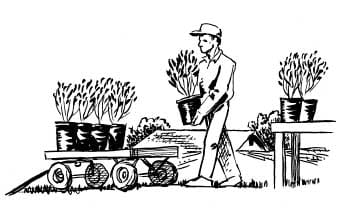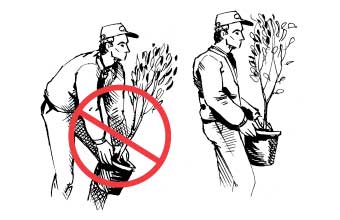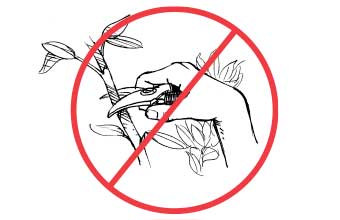Here are some key points:
- Pay close attention to how you bend down, hold tools, and position your body when performing a task.
- Keep your wrists as straight as possible.
- Take short breaks and vary the motions within your task.
Staying healthy is important
Being in good physical shape makes you feel better and keeps you safer when doing your job. This is especially true when your job involves such physical tasks as lifting, bending, or carrying heavy loads. It’s important to always think about what you are doing. When you perform the same task repeatedly day after day, pay close attention to how you move and position your body. Otherwise, you could injure your back, shoulders, neck, hands, wrists, or other parts of your body.
How injuries can occur:
Here are some examples of improper body movements or positioning that may result in injury over time:
- Working from an awkward position.
- Excessively bending or twisting your wrists.
- Continually working with your elbows raised.
- Using your hands to pound, push, or otherwise exert strong force.
- Pushing, pulling, or lifting too heavy of a load.
- Rapidly changing your posture.
- Repeatedly reaching above shoulder level or lifting objects higher than chest high.
- Bending from the waist or twisting your body when lifting or carrying objects.
- Lifting with your back instead of your legs.
- Gripping tools that don’t comfortably fit your hand or dig into your palm.
- Not using the correct tools to cut, trim, or hammer.
- Injuries may also occur from the prolonged use of vibrating tools.
Some important tips:
- Try to vary your tasks and the motions within those tasks.
- Take short breaks when you are performing the same task repeatedly. Use these breaks to give your body a rest and to gently stretch the parts of your body you have been using. It’s also good to stretch before you start your work, just as an athlete does before a game.
- Change your position when you return to your task after a break.
- Always use the correct posture. Don’t slouch, bend from the waist to pick up an object, or work from an awkward position.
- Keep your wrists as straight as possible. Check the position of your wrists when you take breaks.
- When possible, keep your work at a comfortable height – between your shoulders and your waist.
- Avoid extended reaching. Keep your work close to you.
- Match tools to your task. Use the lightest weight tool possible. Don’t use tools with handles that dig into your palm.
- Grasp – don’t pinch – tools or other items.
- Make sure knife blades are sharp and other tools are in good working condition.
- Choose work gloves that fit comfortably. Be sure they aren’t too tight or too loose.
- When possible, alternate between hands. This gives your dominant hand a rest.
- Get enough rest, regularly exercise, and stay in good physical shape.
If you have a problem:
Talk with your supervisor if you experience any of these problems. They may be a result of improper body movements or positioning:
- numbness, a tingling sensation, or other pain
- loss of strength
- difficulty moving your fingers, wrists, shoulders, or other body parts
- swelling of your elbow, fingers, or hands
Proper Body Movement Do’s and Don’ts
Do:
- Avoid prolonged heavy lifting or exertion.
- Lift with your legs, not your back. And keep your back straight when carrying objects.
- Check the lighting in your work area. Make sure it’s adequate for your task.
Don't:
- Perform the same task repeatedly without giving your body a chance to rest.
- Work with your wrists at an awkward angle.
- Apply more force than you need to in order to do the job.
When you’re ready to work safely, you’re ready to work. See our full line of safety supplies, including respirators, eye and ear protection, coveralls, first aid, and more.
For more information about workplace safety view our resources here.










